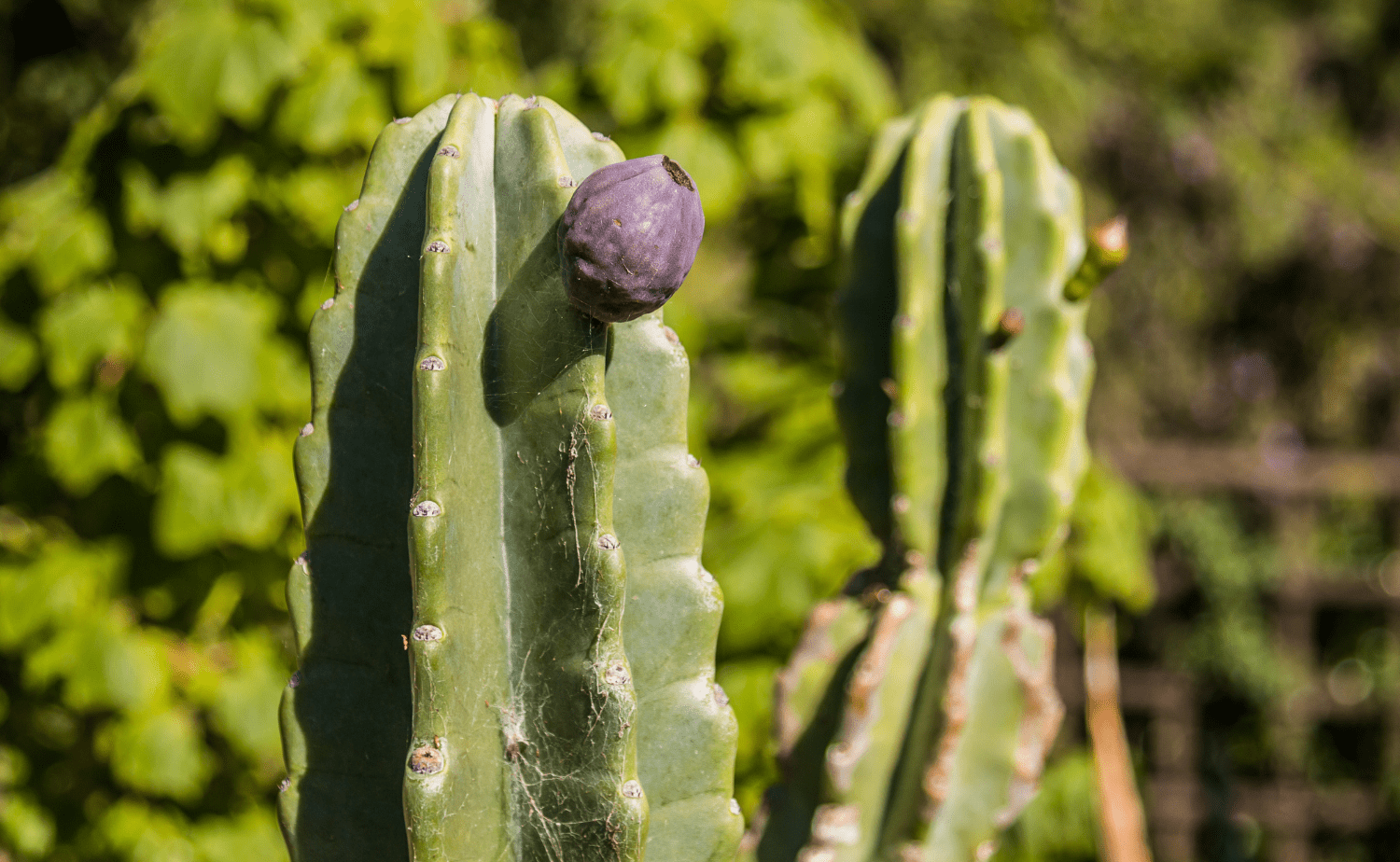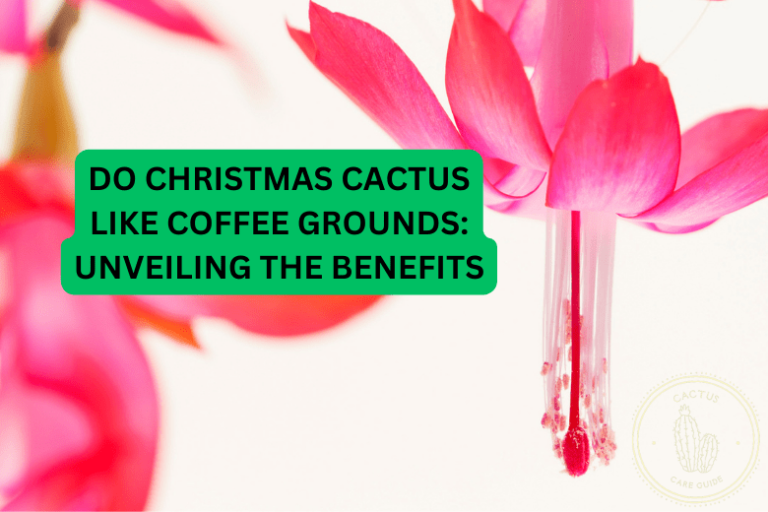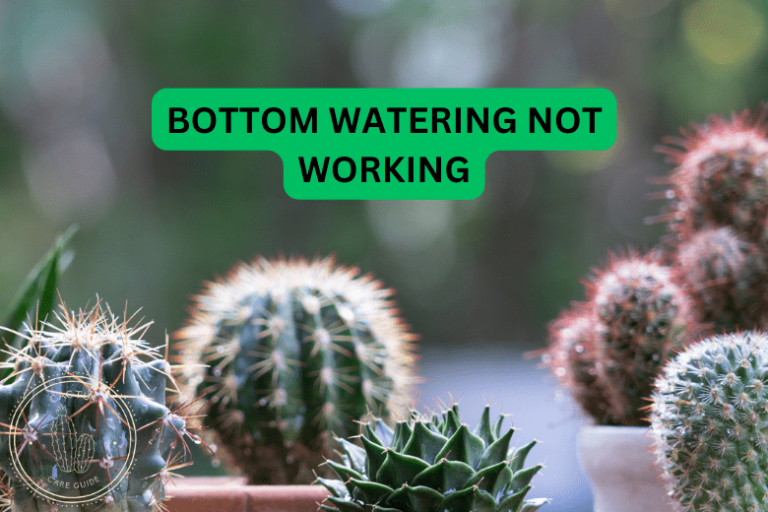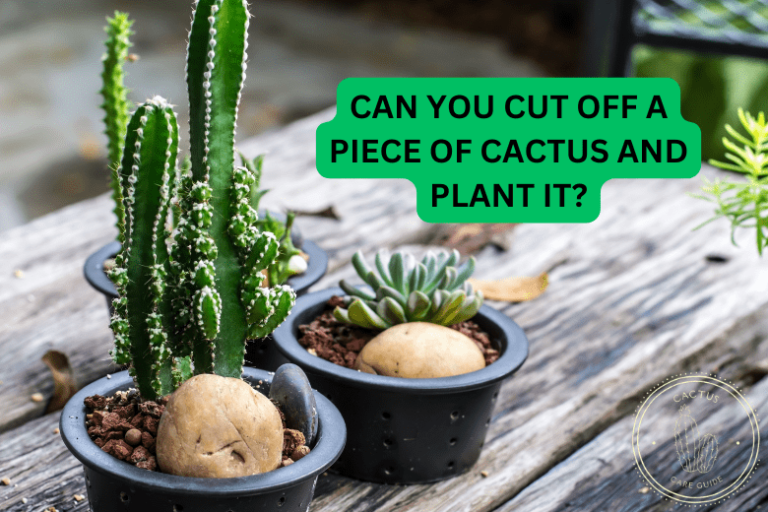Mastering Peruvian apple cactus care: Q&A
The Peruvian Apple Cactus, scientifically known as Cereus peruvianus, is a striking and unique addition to any garden or indoor plant collection. Originating from the arid regions of South America, particularly in Peru, this cactus is renowned for its grand size, distinctive appearance, and delicious edible fruits.
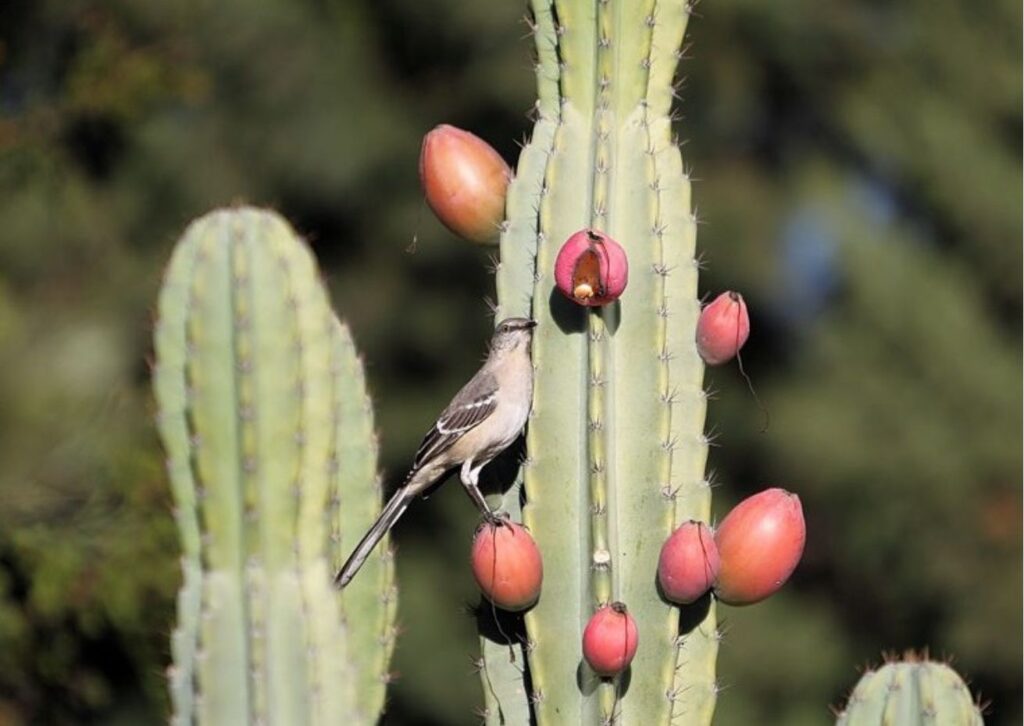
The Peruvian Apple Cactus, often referred to as the “ideal plant” by cactus enthusiasts, is a remarkable specimen known for its ability to have plants of impressive stature, reaching heights of up to 40 feet. This hardy plant, also recognized as a mature plant in its prime, is a true marvel of the botanical world, earning its place as a captivating column cactus.
This comprehensive guide will delve into the essential aspects of Peruvian Apple Cactus care, offering insights into its growth requirements, maintenance, and tips to ensure its health and vitality.
Peruvian apple cacti varieties
One notable variety is the classic “Golden Torch Cactus”, distinguished by its vivid yellow spines that add a brilliant burst of color to any garden landscape.
Another captivating variant is the “Monstrose Peruvian Apple Cactus”, featuring twisted and contorted stems, creating a fascinatingly irregular form.
Enthusiasts also often seek out the “Rojo Cereus”, recognized for its deep red stems that create a stunning contrast against its green skin.
Additionally, the “Giant Columnar Cactus” variety stands out for its tall height, making it a striking focal point in any outdoor space.
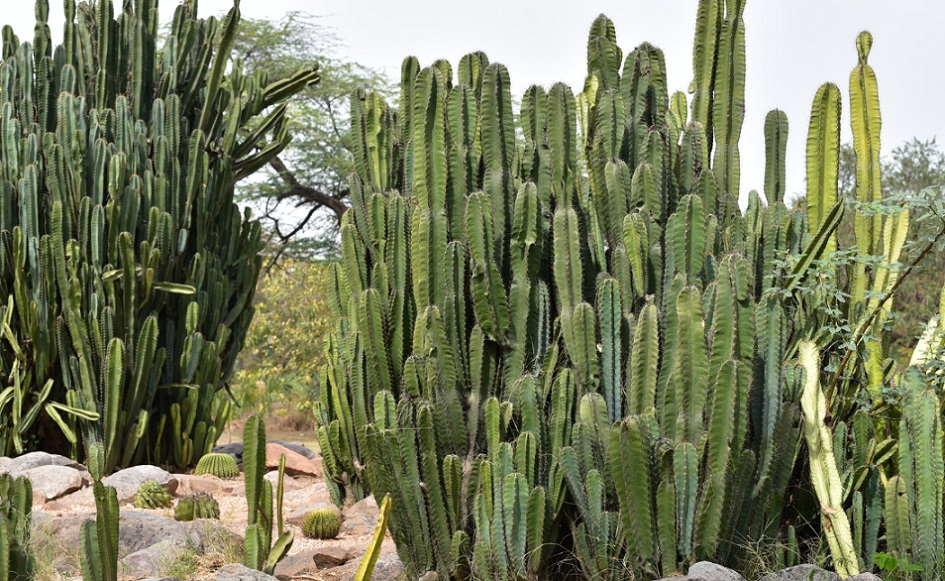
Hedge cactus care and its edible fruit
The hedge cactus, scientifically known as Cereus hexagonus, is a remarkable and versatile plant that offers both ornamental beauty and a delicious edible treat.
This cactus variety is known for its striking appearance and its delectable fruits, often referred to as “Pitaya” or “Dragon Fruit”.
Proper care for hedge cactus involves providing it with well-draining soil, ample sunlight, and occasional watering, considering that it’s a drought-tolerant species. Pruning may be necessary to maintain its shape and promote fruit production.
When it comes to the edible aspect of hedge cactus care, the fruits are the highlight. Dragon fruit is pink or yellow-skinned and not only visually appealing but also sweet and flavorful.
How to care for Peruvian cactus?
Caring for Peruvian cacti, specifically the Cereus peruvianus variety, requires attention to several key factors. First and foremost, these cacti thrive in well-draining soil, making it essential to ensure proper soil composition to prevent waterlogging.
Additionally, providing full sunlight is determinative, as these cacti are native to arid regions and require plenty of sun to thrive. Water your plants only when necessary, and make sure the soil is dry before watering again. Giving too much water can cause the root rot.
Lastly, be mindful of common pests such as scale insects and mealybugs, which can affect Peruvian cacti. Regular inspection and treatment as needed will help keep your cactus healthy. With proper care, your Peruvian cactus can thrive and become a stunning addition to your plant collection or garden.
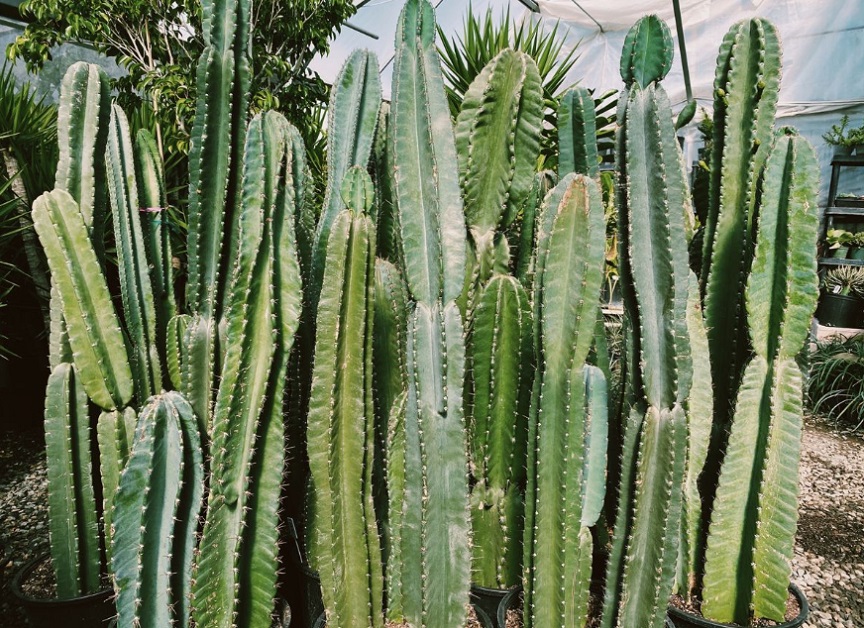
How often to water Peruvian apple cactus plants?
Watering Peruvian Apple Cactus plants should be done with care, as they are adapted to arid conditions and are sensitive to overwatering. The frequency of watering largely depends on factors such as the climate, season, and age of the cactus.
During the growing season, which typically spans spring through early fall, you can water your Peruvian Apple Cactus more frequently, about every 2-4 weeks. However, always check the moisture level of the soil before watering. It’s best to water thoroughly and then let the soil dry out to a depth of at least 2-3 inches before the next watering.
In contrast, during the dormant season (late fall and winter), reduce the frequency of watering significantly. You may only need to water your cactus once every 6-8 weeks or even less, depending on the conditions.
Be cautious not to waterlog the soil during this period, as the cactus requires less moisture when it’s not actively growing.

How quickly will a Peruvian apple cactus grow?
The growth rate of a Peruvian Apple Cactus can vary depending on various factors, including environmental conditions, care, and the age of the cactus when you acquire it. In general, Peruvian Apple Cacti are known for their relatively slow growth compared to some other cactus species.
During the first few years of its life, a Peruvian Apple Cactus may not show substantial growth above ground. It often dedicates its early years to developing a robust root system. Typically, you can expect a young Peruvian Apple Cactus to grow around 6 to 12 inches (15 to 30 cm) in height each year during the initial stages.
As the cactus matures and its root system becomes well-established, its growth rate may increase slightly. However, it’s essential to keep in mind that these cacti are not known for rapid growth and may take many years to reach their full potential height, which can range from 15 to 40 feet (4.5 to 12 m) or more in their natural habitat.
Peruvian apple cactus diseases and pests
One common issue is mealybugs, which can infest the cactus and harm its growth. To combat these pests, consider using organic insecticides or a mixture of mild soap and water to gently wash them away.
Ensure that your cactus receives adequate direct sun, as healthy, well-exposed cacti are less likely to attract pests.
Regarding diseases, root rot can be a concern if the cactus is overwatered or the soil doesn’t drain well. To prevent this, use well-draining soil, such as a mix with peat-based compost, and avoid excessive watering.
Common pests
Common pests that can affect Peruvian Apple Cacti include scale insects, mealybugs, and spider mites. These pests can cause damage by feeding on the cactus’s sap, weakening the plant and potentially leading to discolored or distorted growth.
Regularly inspect your cactus for signs of infestation, such as small white or brown insects, webs, or sticky residue.
Promptly addressing these pest issues with organic insecticides or gentle manual removal can help ensure the health and longevity of your Peruvian Apple Cactus.
Recommended to check: How to get rid of cactus bugs
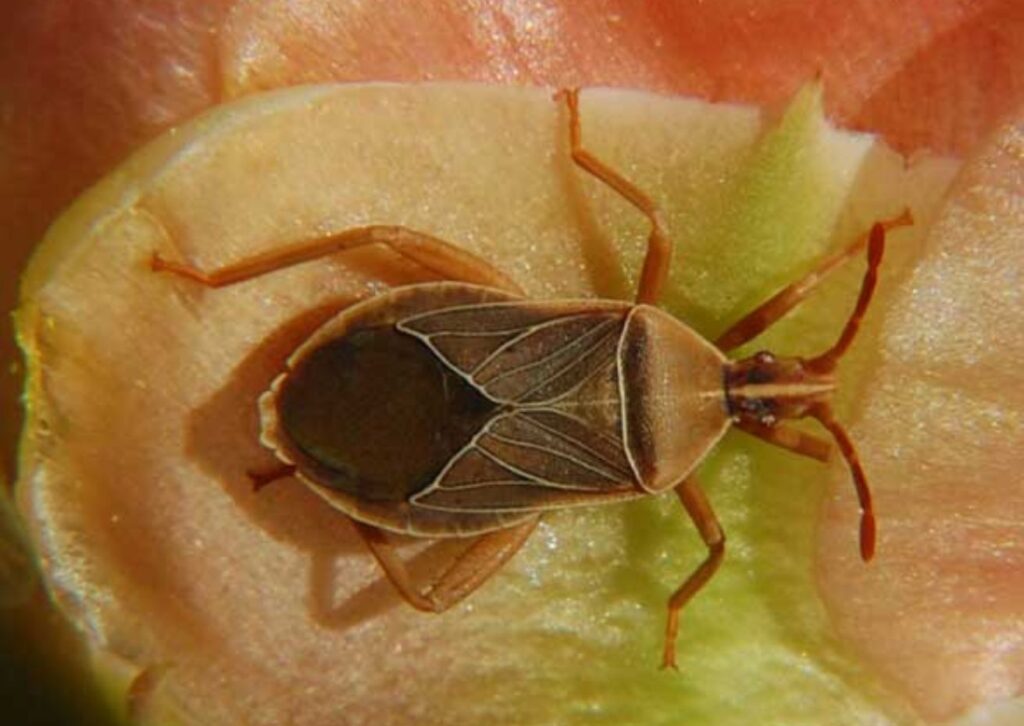
Cereus peruvianus growth cycle
The growth cycle of Cereus peruvianus, commonly known as the Peruvian Apple Cactus, is closely tied to its environmental conditions. These cacti thrive in bright light and require well-draining soil, typically a cactus mix, to prevent root rot caused by too much moisture.
During their active growing season, which typically spans spring and summer, they benefit from full sun exposure. This period is when you can expect the most significant growth, with new stems sprouting and existing ones elongating.
However, during the dormant winter months, growth slows down considerably. It’s essential to reduce watering during this period and protect the cactus from frost if you live in a cold climate. Understanding and accommodating the growth cycle of Cereus peruvianus is key to its long-term health and vitality.
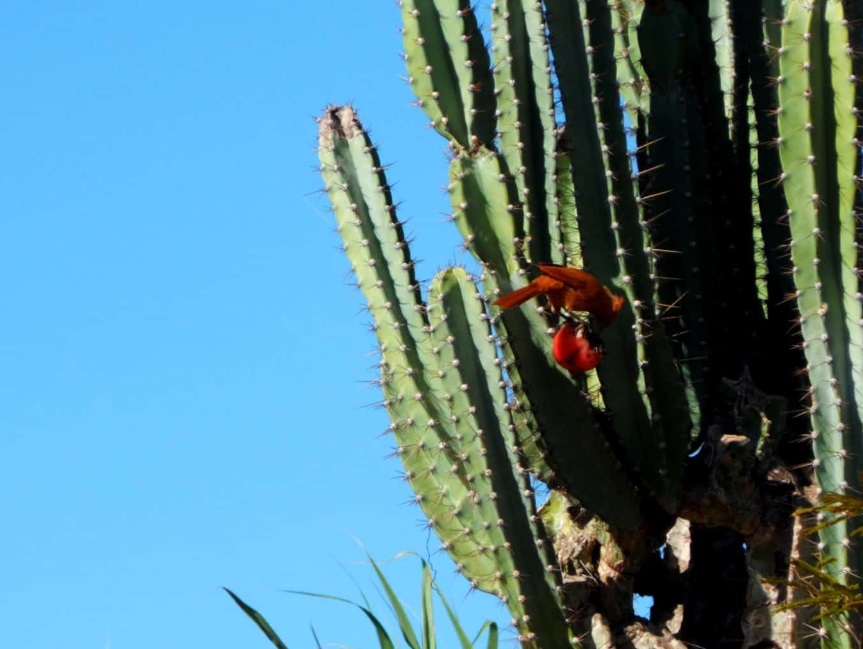
Growing Peruvian apple cactus from cuttings
Growing Peruvian Apple Cactus from cuttings can be a rewarding way to propagate and cultivate new plants. When the plant matures, typically after several years, it develops distinctive stem ribs.
To propagate, select healthy stem cuttings from the parent plant, making sure they are at least a few inches long and have a well-defined rib structure. It’s important to note that cuttings from the “monstrose apple cactus” variant can also be propagated in this manner, inheriting their unique growth patterns.
Allow the cuttings to callus for a few days to prevent rot, then plant them in a well-draining cactus mix. With proper care, including bright light and occasional watering, these cuttings will root and grow into new Peruvian Apple Cactus plants, preserving the unique characteristics of their parent plant.
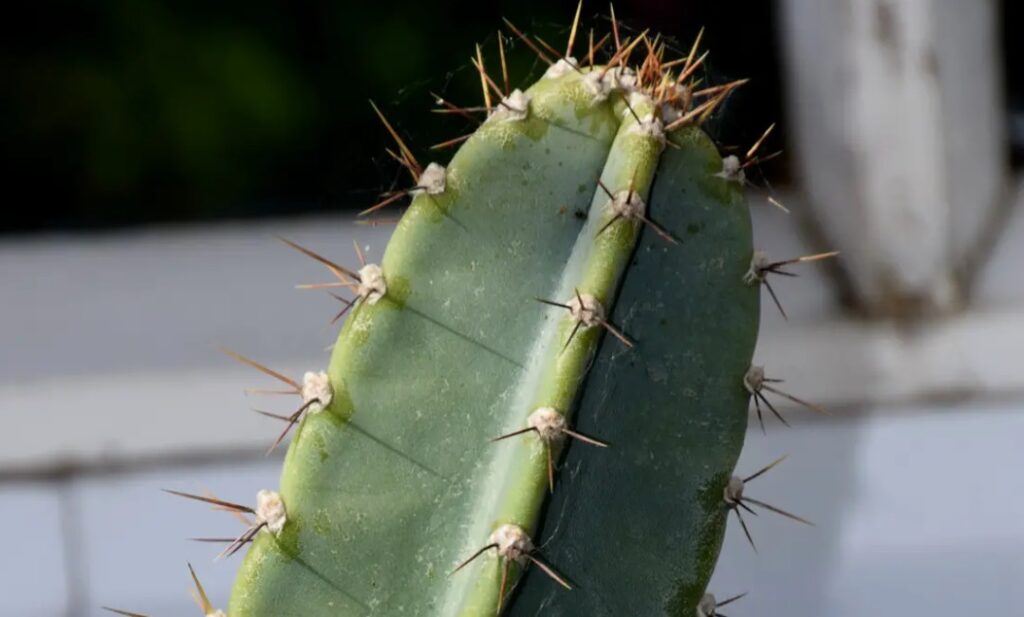
Blooming and pollination
The blooming and pollination of Cereus repandus are fascinating processes that ultimately lead to the development of its beloved edible fruit. Like many desert cacti, the mature plant produces striking white flowers, typically at night or in the early morning hours when pollinators like moths and bats are most active.
The intricate dance of pollination begins when these nocturnal visitors are attracted to the sweet nectar of the white flowers. As they feed, they inadvertently transfer pollen from one flower to another, facilitating fertilization.
This process is essential for the development of Cereus fruits, which play a significant role in the ecosystem as a food source for various desert creatures.
Understanding the blooming and pollination cycle of the Peruvian Apple Cactus highlights its importance in desert ecosystems and showcases its remarkable journey from flowering to the production of delectable fruits.
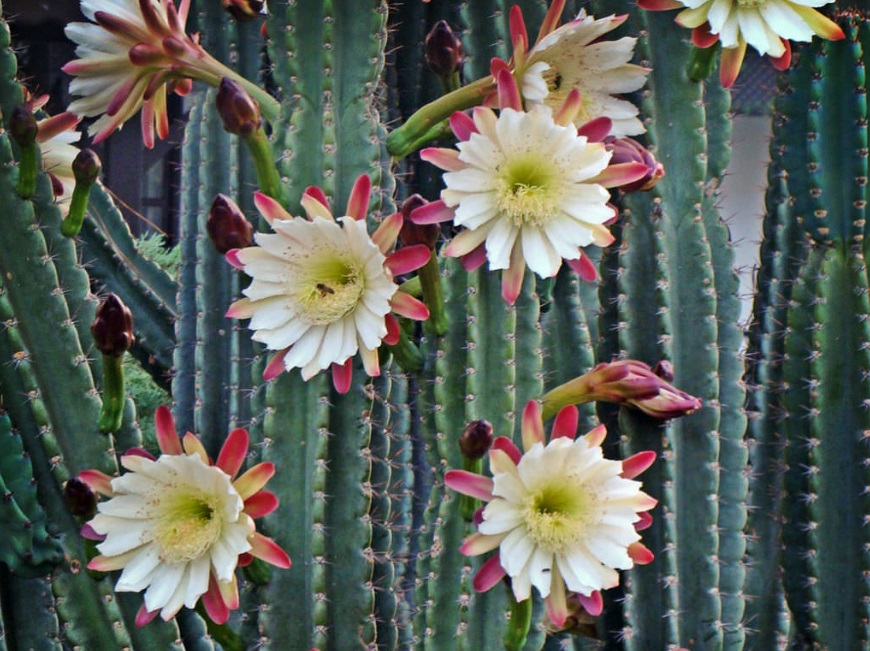
Harvesting and enjoying Peruvian apple cactus fruits
Harvesting and enjoying Peruvian cactus fruits, often referred to as Pitaya or Dragon Fruit, is a delightful culmination of your cactus care efforts. When the fruits are fully ripe, they will exhibit vibrant colors and yield slightly to gentle pressure.
Use a pair of scissors or a knife to cut the fruit from the cactus, being cautious of the spines. Once harvested, slice the fruit open to reveal its sweet, juicy flesh, which can be enjoyed fresh, added to fruit salads, or blended into smoothies.
Protecting your cactus in cold climates
Protecting your cactus in cold climates is essential to ensure its survival during winter. Peruvian cactus are sensitive to frost, so when temperatures drop, it’s advisable to move them indoors or into a greenhouse if possible.
If relocation isn’t feasible, covering the cactus with frost cloth can help insulate it from freezing temperatures. Additionally, providing adequate mulch around the base of the plant can protect the roots from extreme cold.
By taking these precautions, you can protect your cactus and enjoy its beauty and resilience year after year, even in chilly climates.
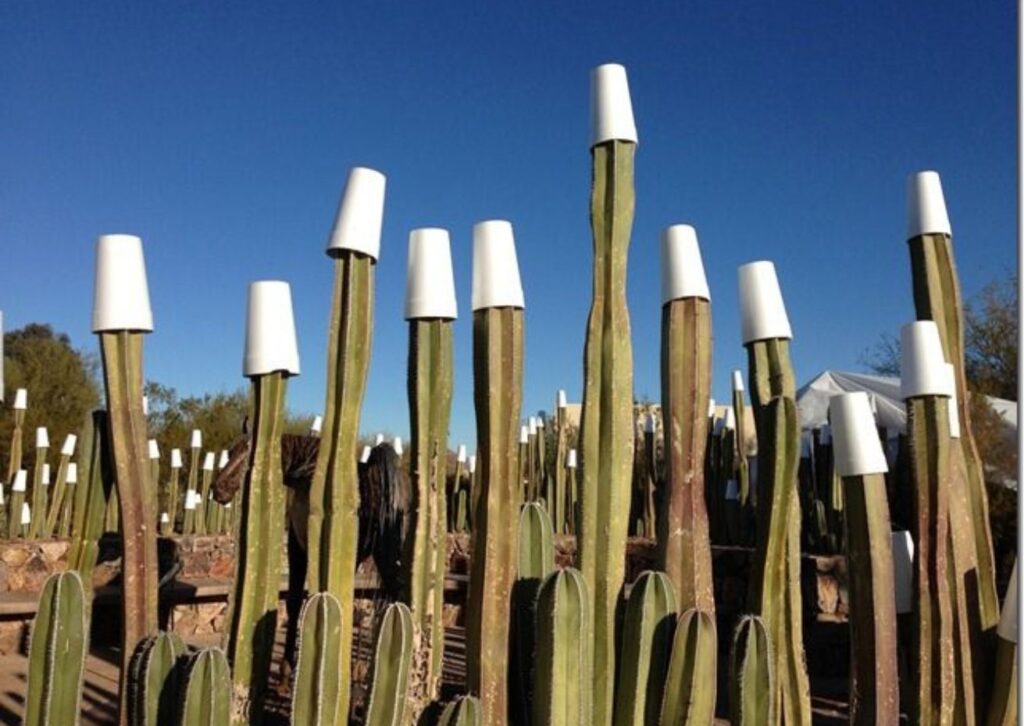
FAQ
How do you care for a Peruvian Apple Cactus indoors?
To care for a Cereus peruvianus indoors, provide it with bright, indirect sunlight, such as placing it near a south or west-facing window. Use well-draining cactus mix soil and water sparingly, allowing the soil to dry out between waterings. If Peruvian Apple Cactus care takes place indoors you need to maintain a temperature range between 50-100°F (10-38°C) and avoid exposing the cactus to cold drafts.
How much sun does a Peruvian Apple Cactus need?
Peruvian Apple Cacti thrive in full sun, so they typically need at least 6 hours of direct sunlight daily to grow properly. In regions with intense sun, providing some afternoon shade during the hottest months can prevent sunburn.
How do you take care of a Peruvian Apple Cactus in the winter?
During the winter, especially in colder climates, it’s crucial to protect your Cereus peruvianus from freezing temperatures. Consider moving it indoors or into a greenhouse, using frost cloth, or adding mulch around the base to insulate the roots.
Continue minimal watering during this dormant period, allowing the soil to dry out thoroughly between waterings.
How often do you water a Peruvian Apple Cactus?
The frequency of watering a Peruvian Cactus depends on factors like the season and the plant’s age. In general, water sparingly, typically every 2-4 weeks during the growing season (spring to early fall), and reduce watering significantly during the winter to prevent overwatering, considering the hardiness zones for outdoor plants.
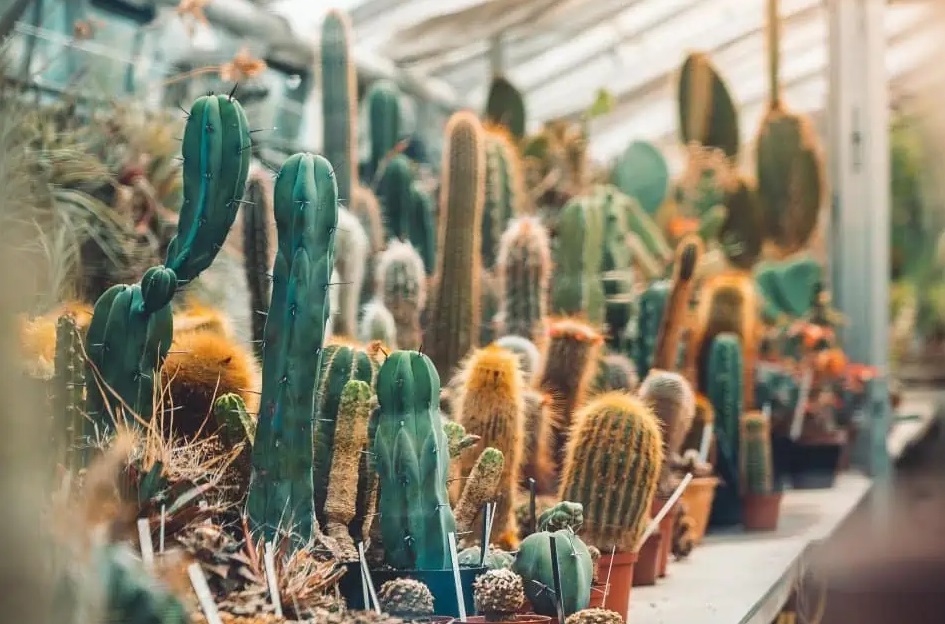
Conclusion
In conclusion, the Cereus peruvianus, native to the arid regions of South America, stands as a true marvel of the desert cactus world. As it matures, this desert cactus transforms into an awe-inspiring columnar wonder, characterized by its thick stems and distinctive brown spines. Beyond its visual appeal, it is a curiosity plant, captivating enthusiasts with its unique growth patterns and hardy nature.
By following the care guidelines outlined in this article, you can enjoy the stunning blooms and succulent fruit of your Peruvian apple cactus for years to come. So, whether you’re a desert plant enthusiast or simply looking to add a touch of natural elegance to your surroundings, these cacti are an excellent choice that will thrive with a little love and attention.

Greetings, dear succulent lovers! I’m Jennifer West and I’m happy to share with you practical tips and guides on growing and caring for succulents, as well as all the magical facts about these unique plants. Grateful to have you on this green journey with me! Check out more about our team here.

